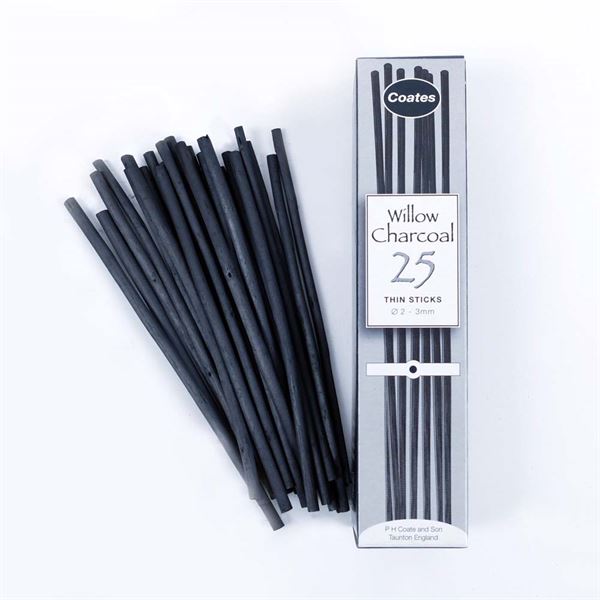Compressed vs. natural charcoal
Charcoal isn’t as simple as it seems. There are several different types, but they can be combined into two types, compressed and natural.
NATURAL CHARCOAL

Natural charcoal can come in the form of vine or willow (we stock willow) and is made by burning willow sticks to a perfect degree in an air-tight kiln, so that it doesnt just burn and fall apart but instead turns into a carbonised wooden stick. Here are some of its properties:
- Easily erased sketches due to lack of binder (especially good under paintings thanks to this) (But can be set with fixatives!)
- Good for smudging and soft shading
- Comes in many different thicknesses
- Soft and Malleable
- Darker than graphite but lighter than compressed charcoal
COMPRESSED CHARCOAL

Compressed charcoal is ground up charcoal mixed with a binder and formed into a stick, which is denser and less fragile than natural charcoal. It feels more like chalk or pastel, and is darker and more permanent than willow. Here’s what it’s good for:
- Bold marks
- Deep and dark areas
- Use sides to draw since it has a uniform shape
Charcoal pencils also fall under the compressed charcoal category, as willow or vine is too fragile to be kept inside a wood casing. They are perfect for:
- Details and accents
- Delicate mark making
- Darkening small areas, even in ex. graphite sketches
- Bold sketching
All of these can of course be used on their own and in combination with eachother and other media, such as watercolour (or just water). By using water, you can create a beautiful expressive effect with the charcoal, making it look almost like watered down ink.
In this work, Degas uses pink paper for his charcoal drawing, so that he can use white chalk to create further depth through highlights.
Seated Dancer, 1873–74
Edgar Degas. Charcoal, Graphite and Chalk on Pink Paper